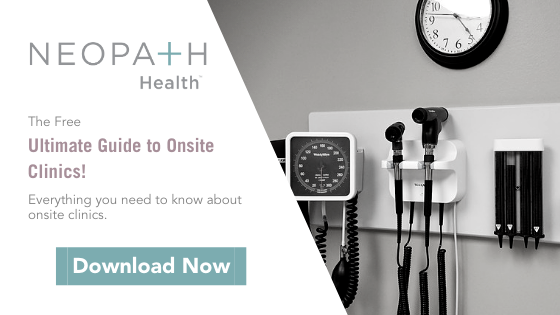Introduction
It’s no secret that healthy employees cost less. They work harder, longer, and often have higher morale than someone who's health isn't up to par. So if you’re reading this article because you’ve determined your company needs a wellness program and are on a mission to improve the health of your employees, you’re on the right track. Employees spend so much of their time at work! In fact, work is often the place where people spend most of their awake hours. It only makes sense to start there and build a healthy supportive environment for your company to thrive.
Often times, employers have the best intentions when implementing their workplace wellness programs however, there are a lot of opportunities for mistakes to be made. Here are 8 common workplace wellness program faux pas.

Mistake #1: Ruling with an Iron Fist
Don’t force your employees to participate in your wellness program. Forced participation doesn’t lead to high levels of employee engagement and doesn’t lead to lasting, long-term wellness changes, both of which are necessary to start helping your bottom line. Not many adults like to be forced to do anything period, especially when it comes to their health.
Coinciding with forced participation is dictating wellness goals to your employees without soliciting their input first. Healthy goal setting should be a collaborative process as employees will likely take more ownership in achieving them if they are on the same page and view the goals as being of importance.
 Mistake #2: Scaring your employees into being healthy
Mistake #2: Scaring your employees into being healthy
If your wellness program is shouting stats and figures that forecast the impending doom of people with unhealthy habits, you might need to lighten it up a bit. Those facts definitely have a place in your messaging and can be beneficial, however, highlighting the positive outcomes and sharing empowering messages surrounding your employees’ health can be much more effective.
Mistake #3: Overstating the Obvious
There can be a fine line between being a great health and wellness resource for your employees and being annoying. Your employees are likely already aware to some extent, of the choices they are making and the impact it’s having on their health. Take smoking for example. Almost everyone knows that smoking is bad for you. Blasting your employees repeatedly and trying to force them to quit, will likely have the adverse effect and drive them away. Instead, encourage your employees and empower them to make the right decision within the confines of your wellness program and have resources readily available upon request.
Mistake #4: Living in Big Data Filled Spreadsheets
Don’t become so consumed with data tracking and spreadsheets that you forget to look up from your computer. Take a break from over analyzing point totals, errors, and generating reports. All of those things are definitely important, but not if they are taking the place of supporting and engaging with your employees directly.

Mistake #5: Stretching the Dollar a Little Too Far
Hardly anything is cheap now-a-days and employee wellness programs are no exception. Your program doesn’t have to break the bank in order to be effective, but one of the biggest mistakes a company mistake is stretching insufficient funds across a major program.
Wellness programs don't have to break the bank in order to be effective, but one of the biggest mistakes a company can make is stretching insufficient funds across a major program. [Click to Tweet!]
What happens if a company does this? Incorporate Massage calls it, “random acts of wellness” and rightfully so. Random acts of wellness are are disjointed efforts that don’t move the needle. Although they come from the best of intentions, it can lead to sporadic attempts with a lack of consistency. For example, you start stocking fresh fruit for your employees, but months later, funds dwindle and the fruit disappears. This can lead to employees not taking your program seriously and to a lack of buy-in when it’s time fully implement a program.
Mistake #6: Stressing Out Over Program Spectators
First off, stressing is bad for your health and counterproductive to your initiative so stop it…! Easier said than done we know. But truthfully, you can’t stress over some people not participating in your program.
According to WellSteps, about 5 - 12% of the employee pool will not participate regardless of the information shared or incentive promised for making healthy changes. Whether it comes down to principal of not liking being told what to do or the fact the employees are content with the way they are living their life, they aren’t going to change. It doesn’t pay to stress over this subset. More often than not, it’s a small minority and your wellness program efforts are being appreciated elsewhere.
 Mistake #7: Continuing Business As Usual
Mistake #7: Continuing Business As Usual
You can’t expect healthy changes to happen and your employees to take your wellness program seriously if you don’t make changes to everyday life at work. According to ERC, decisions that may not seem like a big deal initially, can really make an impact such as replacing pop machines with healthy drink choices, ditching the donuts at staff meetings, and allowing flexible daily schedules for working out. If wellness is a priority, some things have to change.
Mistake #8: Policing Everyone’s Food
No one wants to be bossed around, especially when it comes to what you’re putting in your mouth. Although it can be tempting because any healthy quest can literally be derailed in the kitchen, it’s not a good idea to go around slapping cupcakes out of peoples’ hands. Instead, focus your energy on leading by example and on empowering your employees.
Conclusion
Are you guilty of making some of these mistakes? Comment below! Improving employee health is always a smart move and it's never too late to make a change for the better.
.png?width=433&name=NeoPath_2019_logo_2color%20(1).png)




